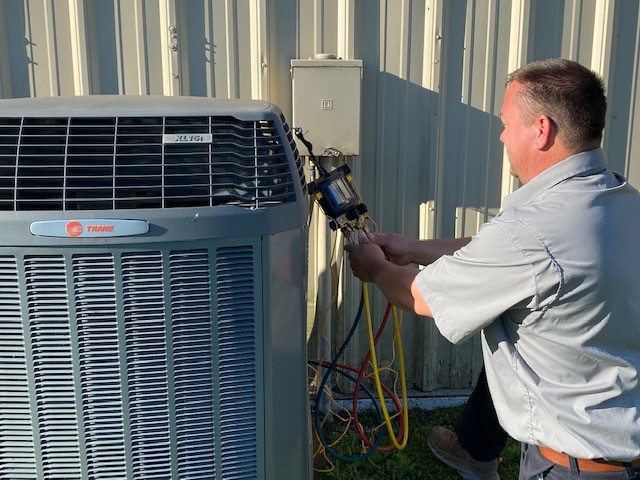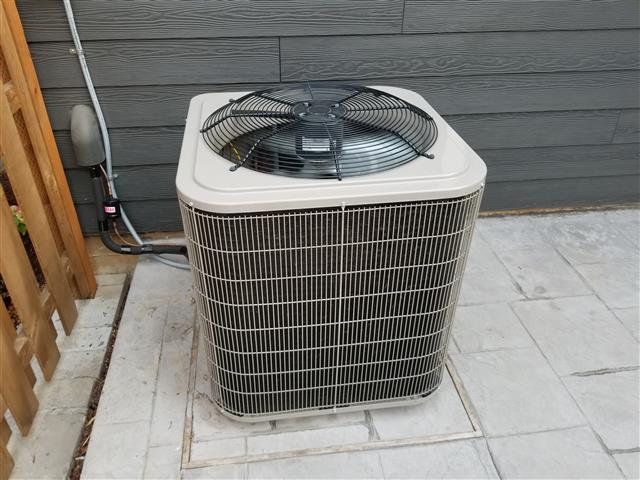
Energy-Efficient Air Conditioning
As temperatures rise, so do our energy bills, especially if we rely on air conditioning to keep our homes comfortable. Air conditioning (AC) is essential in many parts of the world, but it can also be one of the biggest energy drains in a household. With energy costs on the rise and a growing focus on sustainability, it’s more important than ever to ensure that your air conditioning is as energy-efficient as possible. Fortunately, there are several ways to improve the energy efficiency of your AC system, which will not only lower your bills but also reduce your environmental footprint.
In this blog post, we’ll explore the best tips and practices to enhance your air conditioning system’s efficiency and save you money.
1. Choose the Right Size of Air Conditioner
One of the most important factors that affect air conditioning efficiency is the size of the unit relative to the space it’s cooling. Many homeowners assume that bigger is better when it comes to air conditioners, but that’s not always true. If your AC unit is too large, it will cool your home quickly but won’t run long enough to effectively dehumidify the air. This can leave your home feeling damp and uncomfortable while also cycling on and off frequently, which wastes energy.
On the other hand, if your AC is too small, it will struggle to cool the space, working harder than it should, which can also lead to higher energy consumption and wear out the unit faster.
To choose the right size, you should consider the size of the room or home you’re cooling, insulation, and even how much sunlight the space gets. Consulting a professional to calculate the appropriate unit size using the Manual J Load Calculation is a smart first step in ensuring energy efficiency.
2. Use a Programmable Thermostat
A programmable thermostat can be one of the easiest and most effective ways to improve the efficiency of your AC system. It allows you to set specific temperatures for different times of the day, so your air conditioning isn’t running when it’s not needed.
For example, you can program the thermostat to raise the temperature when you’re at work and lower it again shortly before you come home. You can also set it to maintain a higher temperature at night when the outside temperature drops.
Modern smart thermostats go even further, offering features like remote access, learning your schedule, and adjusting temperatures based on real-time weather conditions. By using a programmable or smart thermostat, you could reduce your cooling costs by up to 10% annually.
3. Improve Your Home’s Insulation and Seal Leaks
Your air conditioning unit works harder if your home is not well-insulated or if there are leaks that let cool air escape. Ensuring your home is properly insulated can significantly reduce your cooling needs.
Start by checking for gaps around windows, doors, and any areas where pipes or wires enter your home. Seal these areas with weatherstripping or caulk to prevent cool air from escaping and warm air from entering. Insulating your attic and walls can also help retain cooled air longer, reducing the strain on your AC system.
Adding shades, blinds, or reflective window films can also reduce the amount of heat entering your home through windows, especially during the hottest part of the day.
4. Regular Maintenance and Tune-Ups
Like any major appliance, your air conditioning unit requires regular maintenance to run efficiently. A neglected AC unit can lose efficiency over time, driving up energy costs. To keep it in peak condition, schedule an annual tune-up with a professional HVAC technician.
During a maintenance check, the technician will clean the coils, check refrigerant levels, inspect electrical components, and ensure everything is running smoothly. Dirty filters or clogged coils can restrict airflow, causing the system to work harder, which leads to higher energy consumption.
In addition to professional maintenance, you should regularly change or clean your AC filters every 1 to 3 months. Dirty filters can not only reduce airflow but can also make your system work harder to maintain your desired temperature.
5. Use Ceiling Fans to Support Air Circulation
Ceiling fans can work wonders in improving the energy efficiency of your air conditioning system. Fans don’t lower the temperature of a room, but they help circulate air, making it feel cooler. This allows you to raise your thermostat setting by a few degrees without sacrificing comfort.
For example, if you raise your thermostat by just 2 to 3 degrees and use ceiling fans, you can lower your energy usage by 15% or more. Just remember to turn off fans when you leave the room, as they only provide a cooling effect when you’re present.
6. Upgrade to a High-Efficiency AC Unit
If your air conditioning unit is over 10 to 15 years old, it might be time to consider upgrading to a newer, more energy-efficient model. Older AC units tend to be far less efficient than newer models that meet higher energy standards. When shopping for a new unit, look for those with a high Seasonal Energy Efficiency Ratio (SEER) rating.
A unit with a SEER rating of 16 or higher is considered highly efficient, and the higher the SEER rating, the more energy you’ll save over time. While the upfront cost of a new system might seem steep, the long-term savings in energy costs often justify the investment. Come and visit berkeys.com/flower-mound-air-conditioning/ to find out more about the energy-efficient air conditioning.

7. Utilize Zoning Systems
If you live in a large home or have areas that are rarely used, consider installing a zoning system. Zoning systems divide your home into different sections, each with its own thermostat. This allows you to cool only the areas you’re using, instead of wasting energy cooling the entire house.
By directing the cool air where it’s most needed, you can reduce energy waste and make your air conditioning system more efficient. Many newer HVAC systems offer built-in zoning features, and for older systems, zoning can be installed as a retrofit.
8. Minimize Heat Sources Indoors
Your air conditioning system has to work harder when there are heat-producing appliances or activities going on inside your home. To keep your home cooler, try to limit the use of heat-generating appliances like ovens, stovetops, and dryers during the hottest part of the day.
You can also switch to LED light bulbs, which produce far less heat than incandescent bulbs. Using appliances like dishwashers and washing machines at night or early in the morning can also help reduce the amount of heat in your home and give your AC a break.
9. Utilize Natural Ventilation and Night Cooling
When the weather permits, especially in the evenings, you can take advantage of natural ventilation by opening windows to let in cool night air. By using this method to cool your home overnight, you can reduce the amount of time you need to run your air conditioner during the day.
If your climate allows, using cross-ventilation (opening windows on opposite sides of the house) can help improve air circulation and naturally cool down your space. Just be sure to close windows, blinds, and curtains before the heat of the day starts to keep your home cooler longer.
Final Thoughts
With a few simple changes and regular maintenance, you can significantly improve the energy efficiency of your air conditioning system and reduce your cooling costs. Whether it’s by upgrading your AC unit, improving insulation, or adopting smart thermostat strategies, these steps will not only save you money but also reduce your environmental impact.
By taking action today, you can stay comfortable all summer long while keeping your energy bills in check.









